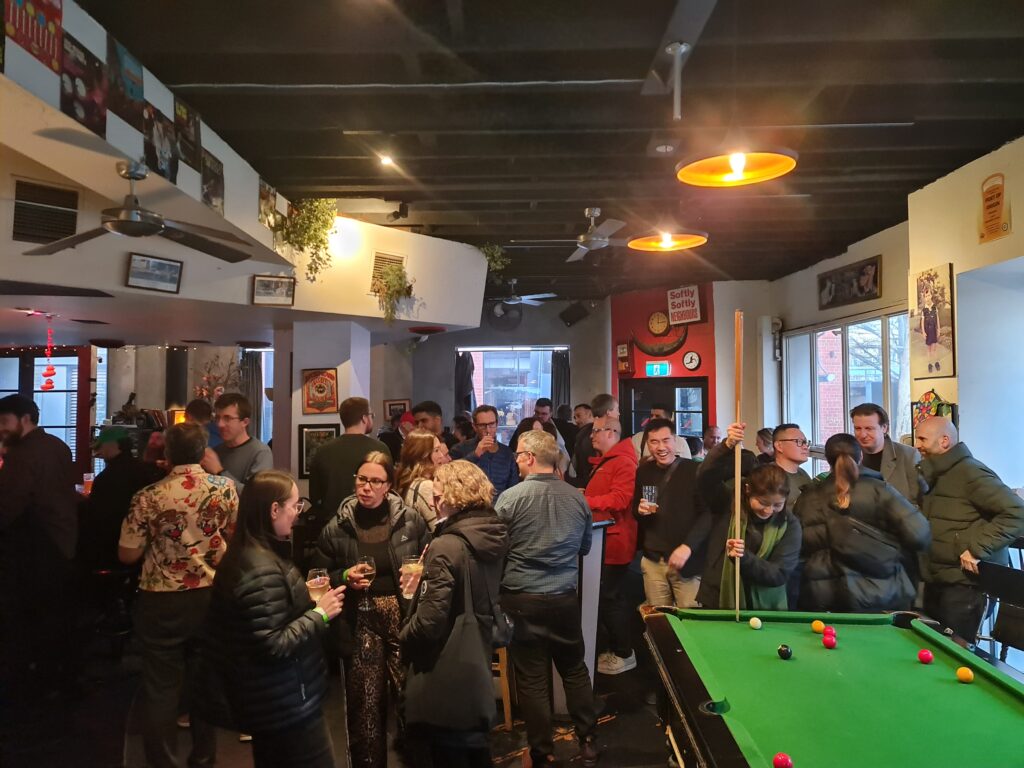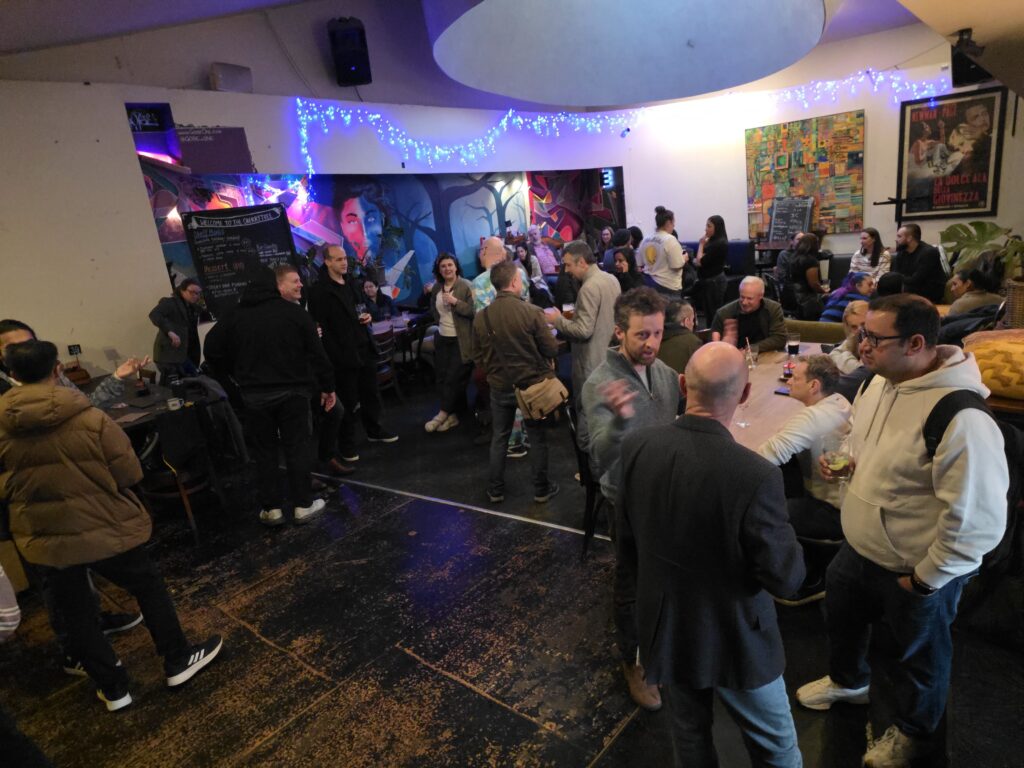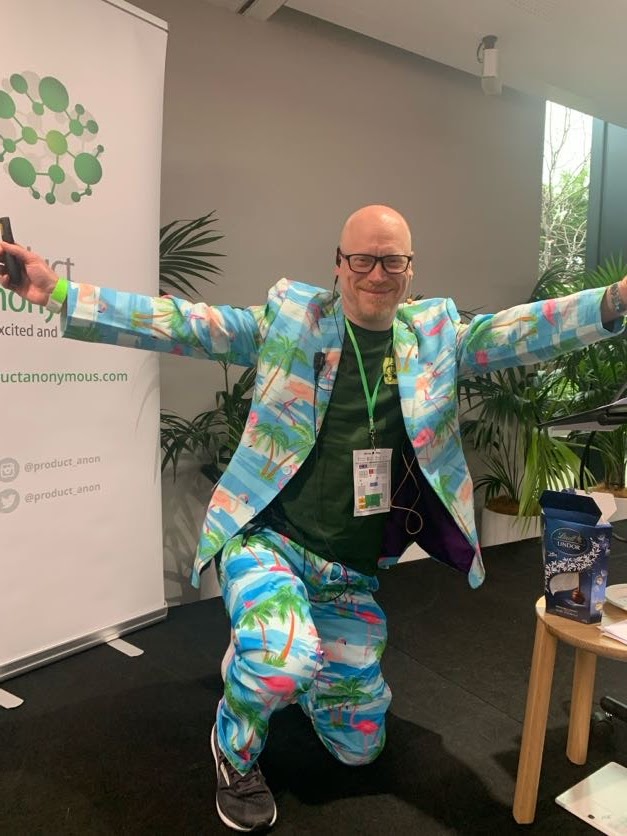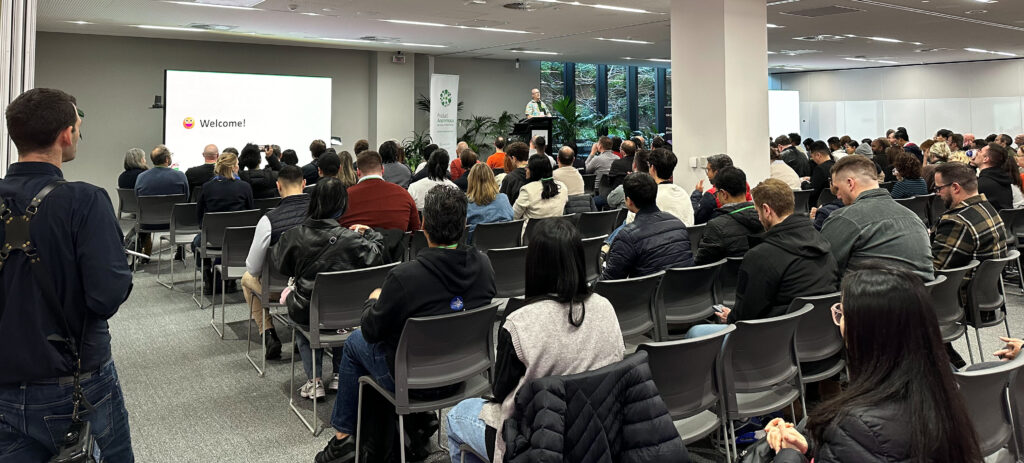
Wow! What a day! Thank you all for attending, speaking, sponsoring, volunteering and making Product Camp possible!
If you were there, we know you had FOMO about the talks you missed. You can’t be everyone at once. Camp is about being there in person and experiencing the talks and meeting the people – but we’ve gathered LI posts, speaker slides, summaries written by our volunteers, etc to help.
If you missed the day, we hope the following gives you a taste of what Product Camp is all about!
Volunteers!
Product Camp is 100% volunteer run. Starting several months before the big day, a group starts to organise everything and then the numbers jump during Camp. Lots of folks in green Camp t-shirts to help you navigate, answer questions and make sure everything is running smoothly!
(& thank you to the volunteers who pulled this post together – Megan McDonald, Vanessa Sammut, Jen Leibhart. All photos by m Brennan unless noted.)
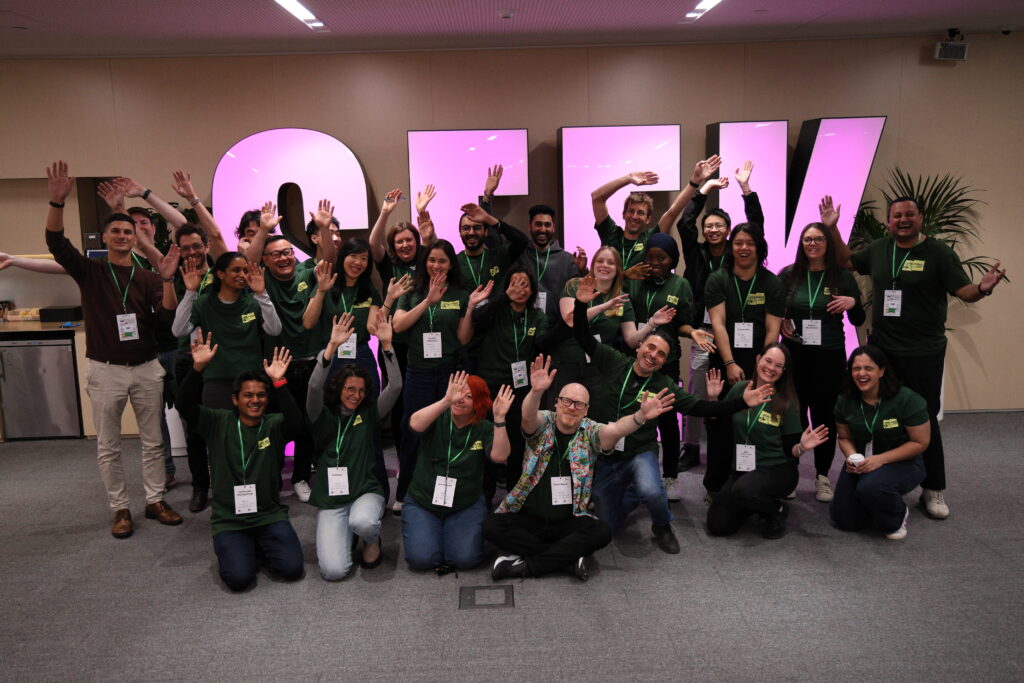
Sponsors!
Thank you to our sponsors!





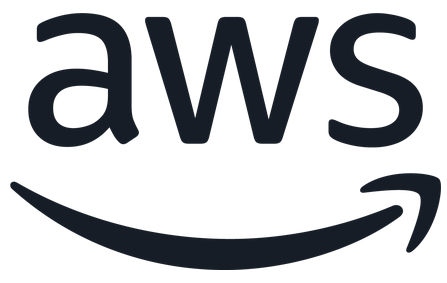



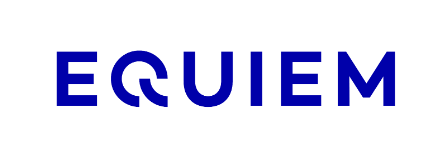

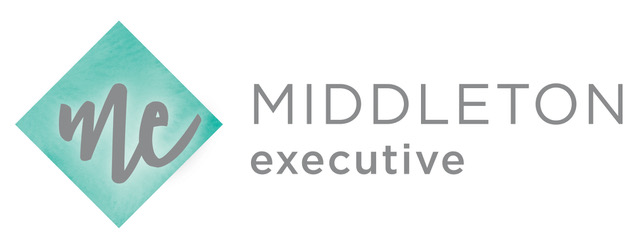

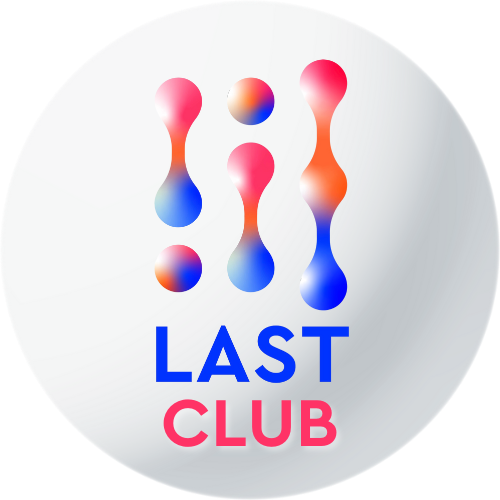
What is Camp really like?
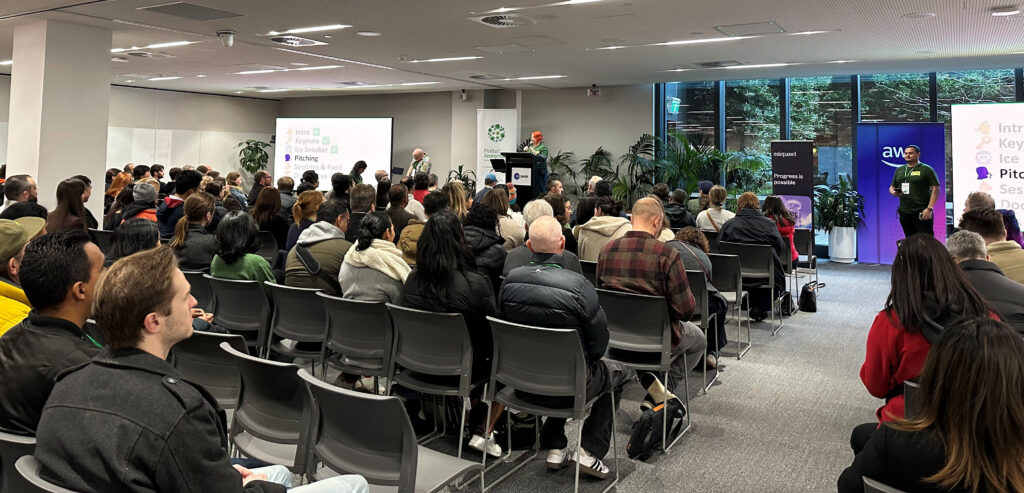
Product Camp Melbourne is an ‘unconference’, which means almost all sessions are participant driven: talks and activities are pitched, chosen, and presented by attendees themselves. On the day, anyone who’s interested gets the chance to briefly pitch their session idea to all participants, who then vote for the sessions they most want to attend. The voting determines the day’s schedule.
What do attendees think?
- Neeti Bhutani’s post on Camp being a simulation of product management
- Attendee into Volunteer into Speaker, Nigel D’Souza, wrote this Newbie’s guide. Perfect for anyone who didn’t attend this year – that could be you or someone you work with!
Keynote!
One of the sessions we do organise – a keynote!
Thank you to our keynote – Dr. Maria Camacho
Maria spoke about Creative Resilience in times of uncertainty – with a particular emphasis on experimenting and creating ‘new data’ via those experiments in order to help de-risk your product (keynote announcement). Maria’s LI post.
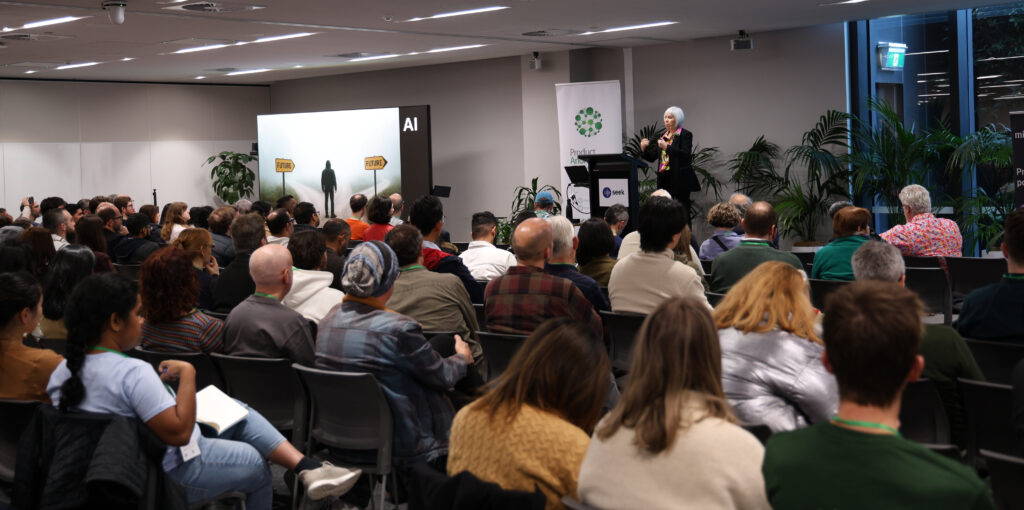
Talks!
Thank you to everyone to pitched a talk – including those who submitted their talks early! Have included links, posts, a few write ups for the talks below.
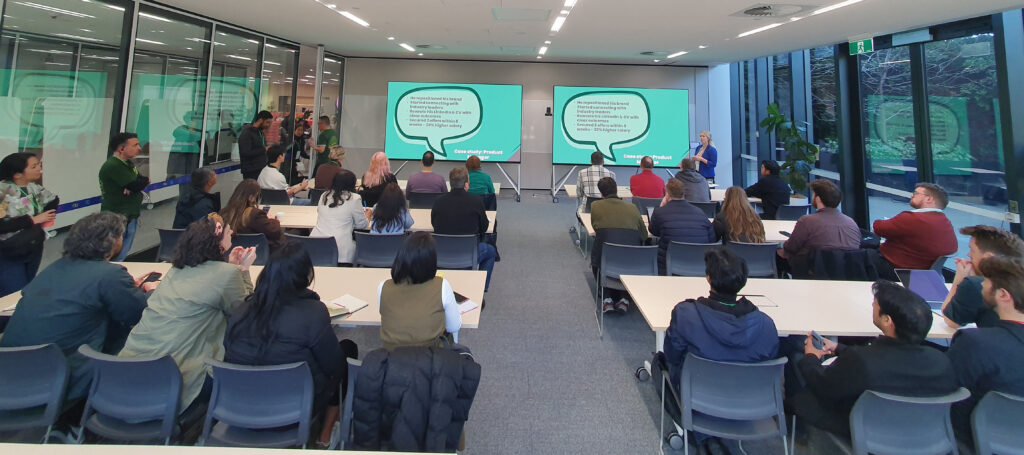
The HIRED Framework, Your Career Playbook – Jade Bennett
A common theme in conversations at Product Camp Melbourne this year was the job search and how tough the market feels right now. Those looking for their next role are finding that roles feel harder to land, interviews feel few and far between, and rejections sting more than ever.
In this popular session, Jade Bennett shared how to apply your product management skills to set yourself up for career success, using the HIRED framework and how you can follow these steps to stay focused and in control of your career.
- Harness your strength
- Identify your brand
- Refine your tools
- Expand your network
- Drive your career forward
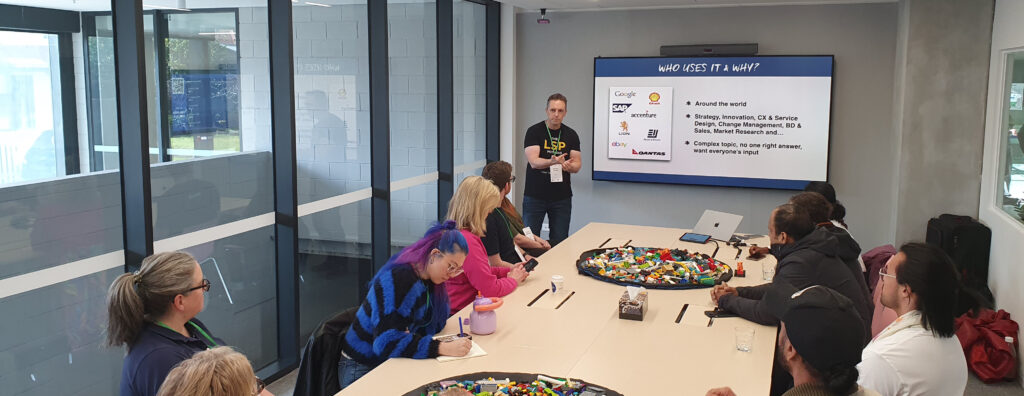
Lego Serious Play – Michael Fearne
Michael gave us an overview of LSP AND folks had a chance to play with lego!
(Photo by Nigel D’Souza)
Frame Better Decisions – Ken Sandy
Discussion on frameworks for decision making & how to apply them in a real-world case.
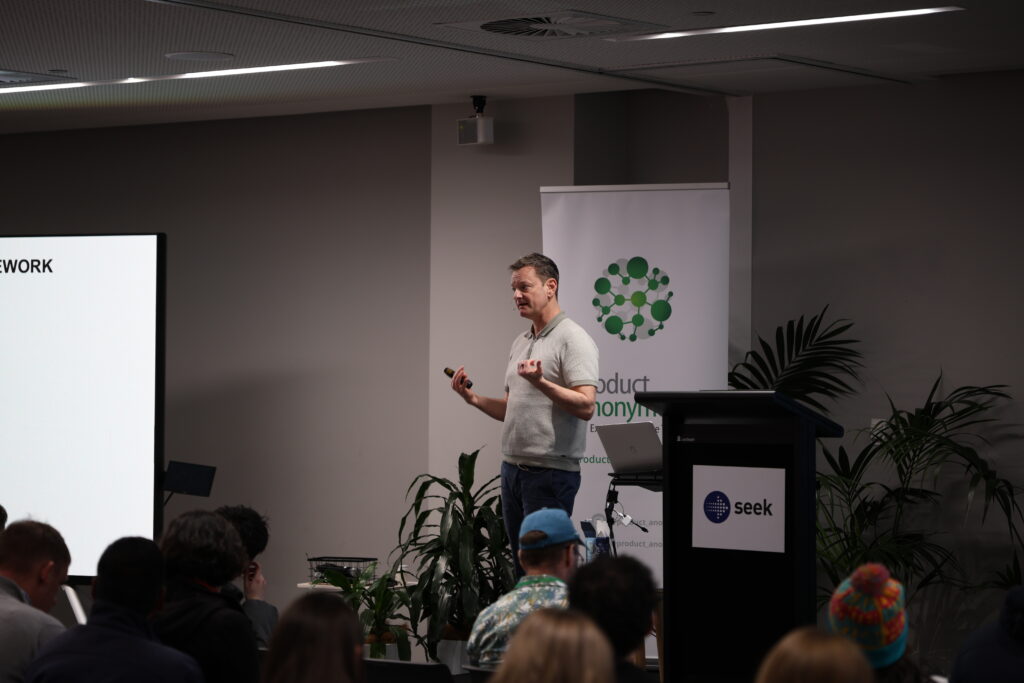
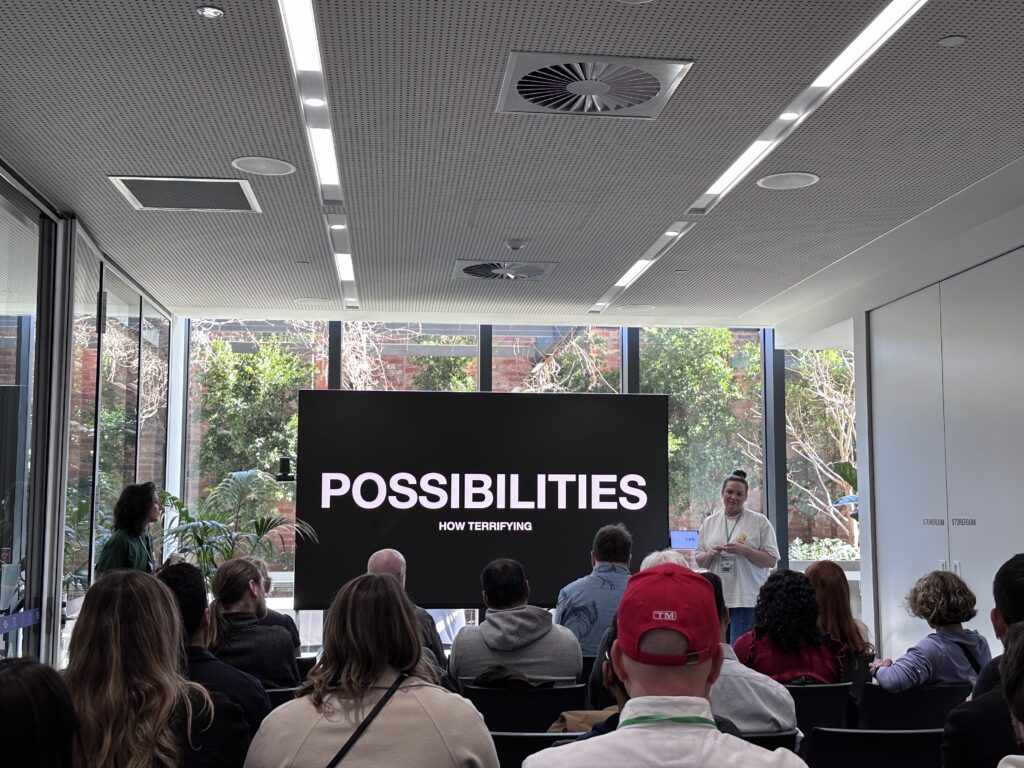
AMA: From PM to Founder — Being my own worst enemy – Katherine Barrett
Going from digital product manager to founder/CEO of a physical product – AMA!
(Photo by Sahanaka Ganegodage)
Defence against stakeholders and other vampire hunters – Lucy Spence
A mischievous look at the art & challenges of stakeholder management
(Photo by Nigel D’Souza & summary below by Megan McDonald)
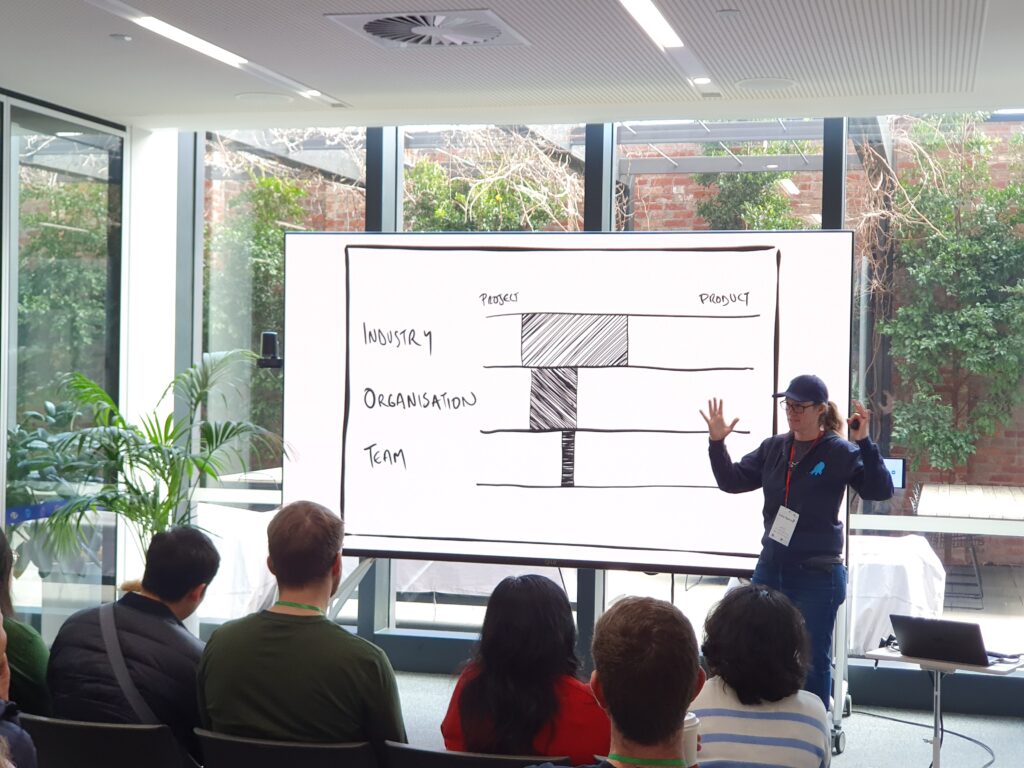
While stakeholders are traditionally defined as those invested in success, in practice they often act like people trying to protect their babies, viewing new initiatives and change agents as potential threats. The key challenge becomes: How do you achieve your outcomes when surrounded by people who appear to be trying hard to stop you?
To help us work through this common problem, Lucy used a fun analogy to share her approach to stakeholder management, encouraging her audience to embrace the characteristics of vampires! Here’s a few:
Characteristic #1: Vampires feed on others to grow stronger – Use your well honed product discovery techniques to extract as much knowledge as you can from your stakeholders – understand what drives them and what success looks like for them – and use this information to work out how to approach them so that you’re more likely to be successful.
Characteristic #3: Vampires have a unique relationship with optics (no shadow, no reflection!) – Understand what needs to be visible in your organisation to be considered successful. How is success outwardly measured? Hard metrics and visible impact? Confidence and charisma? Or is it through strong relationships and conversations?
Characteristic #6: Vampires can use glamour and enthral people – Framing is important. Speak to stakeholders in their language, referencing the metrics they use to drive their part of the business forward. This will really help you land your message.
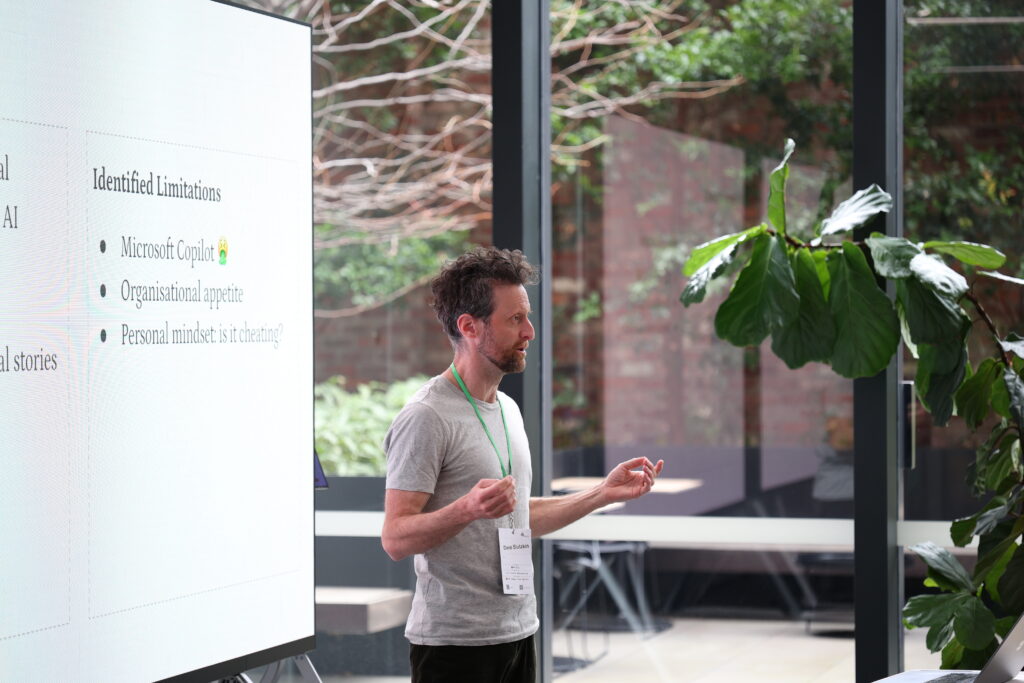
Using AI to become a 10x PM!!! – Dave Slutzkin
How are we product people using AI in our workflow? Dave has interviewed a bunch of us and shared his findings. You can read his LI post to get the details.
What Does an ‘AI Product Manager’ Actually Do? – Calum Dabb
Real life experience from someone with the actual title!
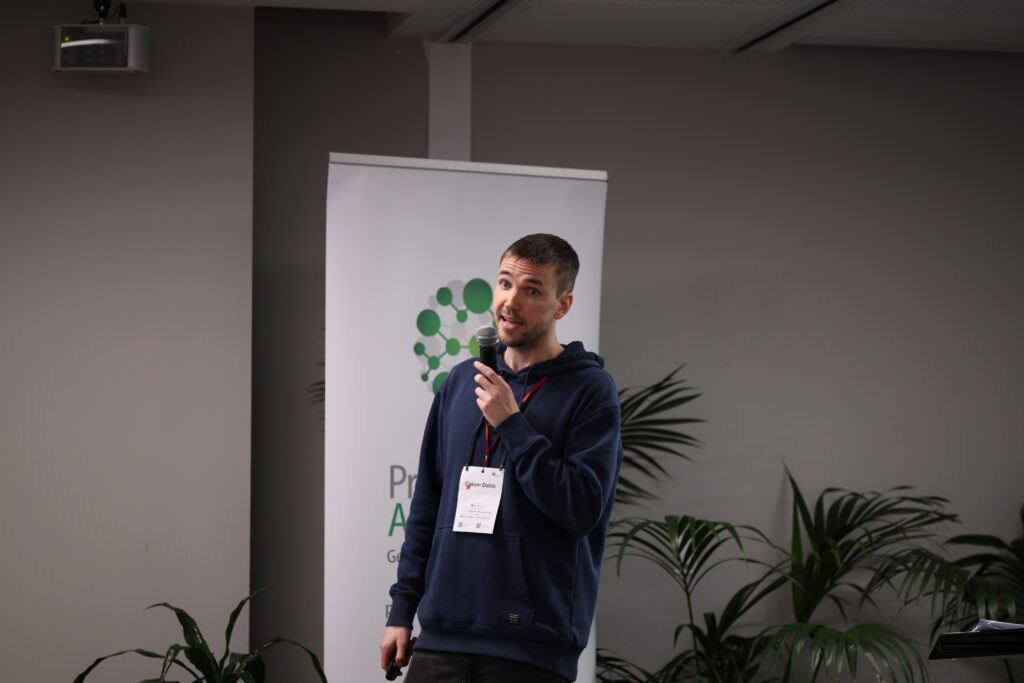
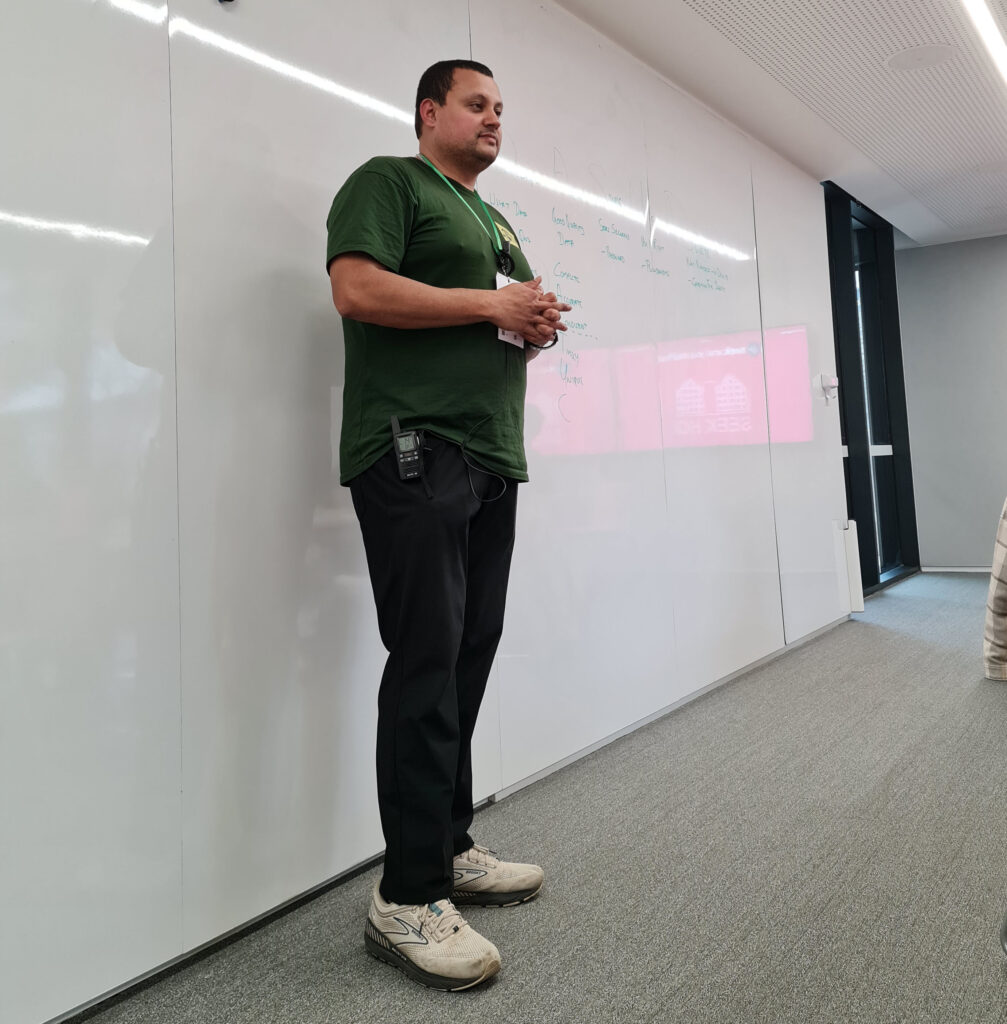
All Your Data(Bases) Belong to Us – Nigel D’Souza
Summary below by Megan McDonald & check out Nigel’s blog post
Great products run on great data – good quality, reliable and trusted data to solve your customers’ problems while keeping your users and your organisation safe. How can we as Product Managers make sure we’re getting this right?
In this informative talk, Nigel introduced us to the DASUD Framework, which can help product teams and organisations build strong governance around their data.
What is the DASUD Framework?
The DASUD Framework is a set of scalable principles that can be applied to data governance models in any industry:
DESIGN: What problem are we trying to solve? What specific data do we need?
ACQUIRE: How can we ensure we collect good quality, reliable data?
STORE: How will we store our data and restrict access appropriately?
USE: Define how our data will be used and re-used at creation.
DELETE: How long are we required to keep our data, and what is the process for deleting it?
Tech products are strongly dependent on good quality and trusted data, particularly in the age of AI, where the risks associated with poor data extend well beyond bad user experiences. DASUD is one way to build trust in the data you collect. By applying this quick and simple framework, you’ll never again wonder whether your product decisions are built on solid ground.
How AI disrupts Your Product Strategy – and practical tips for moving forward – Craig Brown
Will Helmer’s 7 Powers stand up to the change Ai is bringing? Check out Craig’s Medium post.
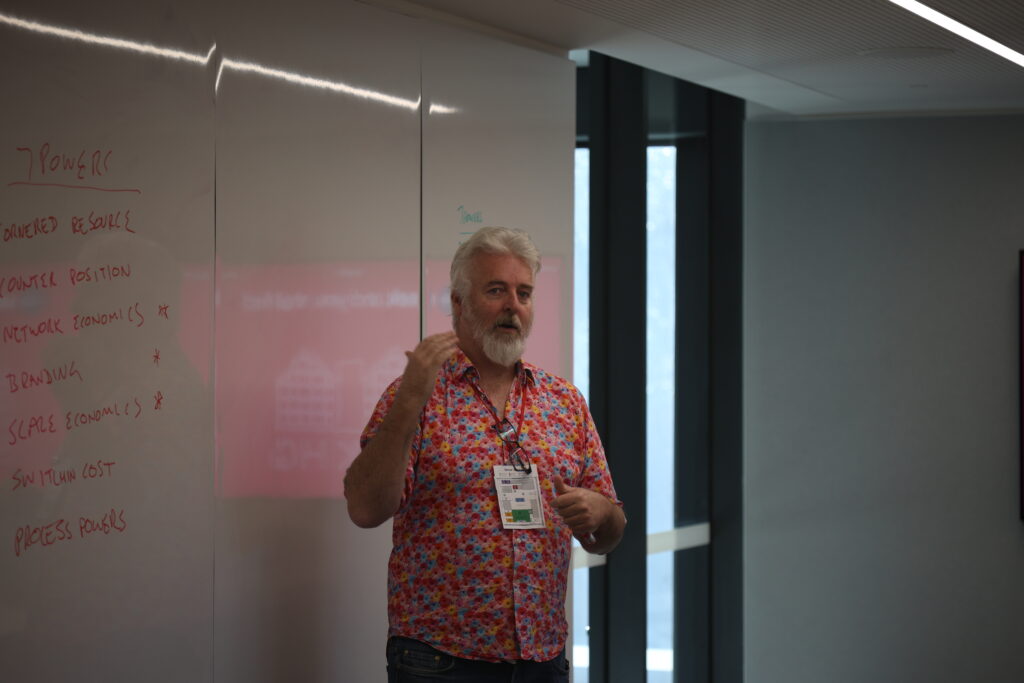
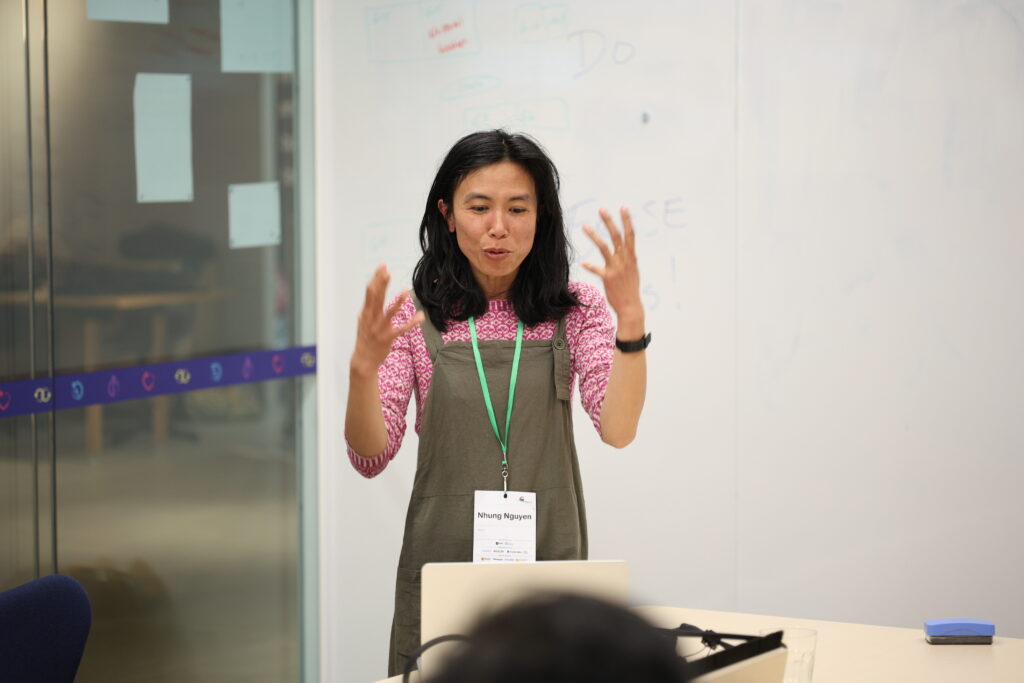
Rocket Surgery Made Easy: How to User Test AI Products (Even If You’re Not Technical) – Nhung Nguyen
Sharing her experience of building prototypes with Ai tools for testing with users (on Medium & talk summary by Martin Foster on LI)
Product Strategy in a nutshell – Brendan Marsh
A step by step approach for strategy.
Summary by Megan McDonald
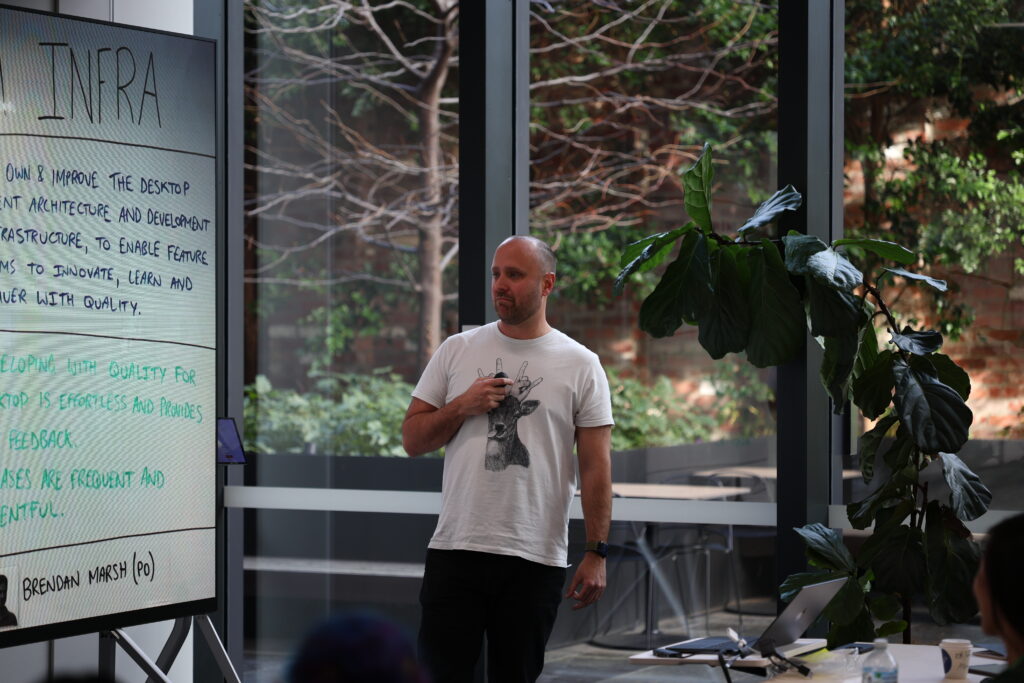
Brendan used a real life example of his time as Product Manager (Desktop) at Spotify to take us through how to structure a product strategy.
What is a product strategy? It’s a set of unique choices, that targets specific sets of needs of your customer, to achieve your company’s goals – it’s your plan to win.
Creating a product strategy that works is hard, and it’s rarely done. By asking the right questions about your business, the market and your product, you can create a product strategy that will ensure your product’s success.
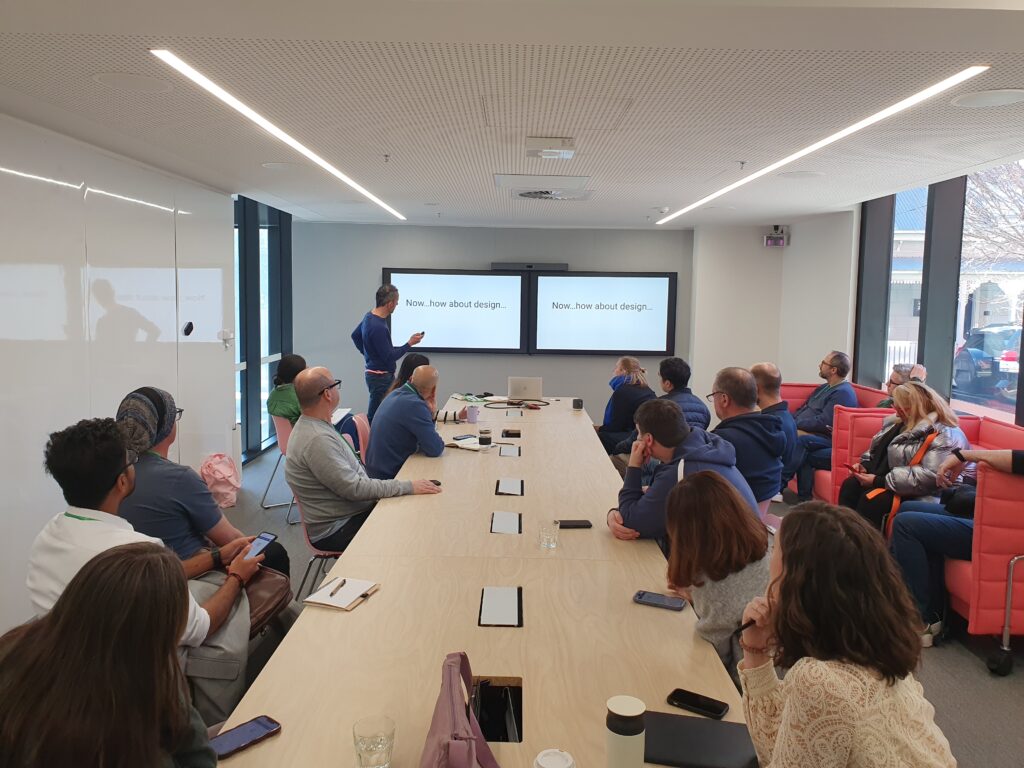
Design – sibling or child? – Amir Ansari
Design often sits in different business units of an organisation which influences the agenda. How does each BU influence design?
(Photo by Nigel D’Souza)
From Chaos to Consensus: Inside a Strategy-Shaping Sprint That Actually Worked – Neeti Bhutani
Neeti’s Medium post on the day
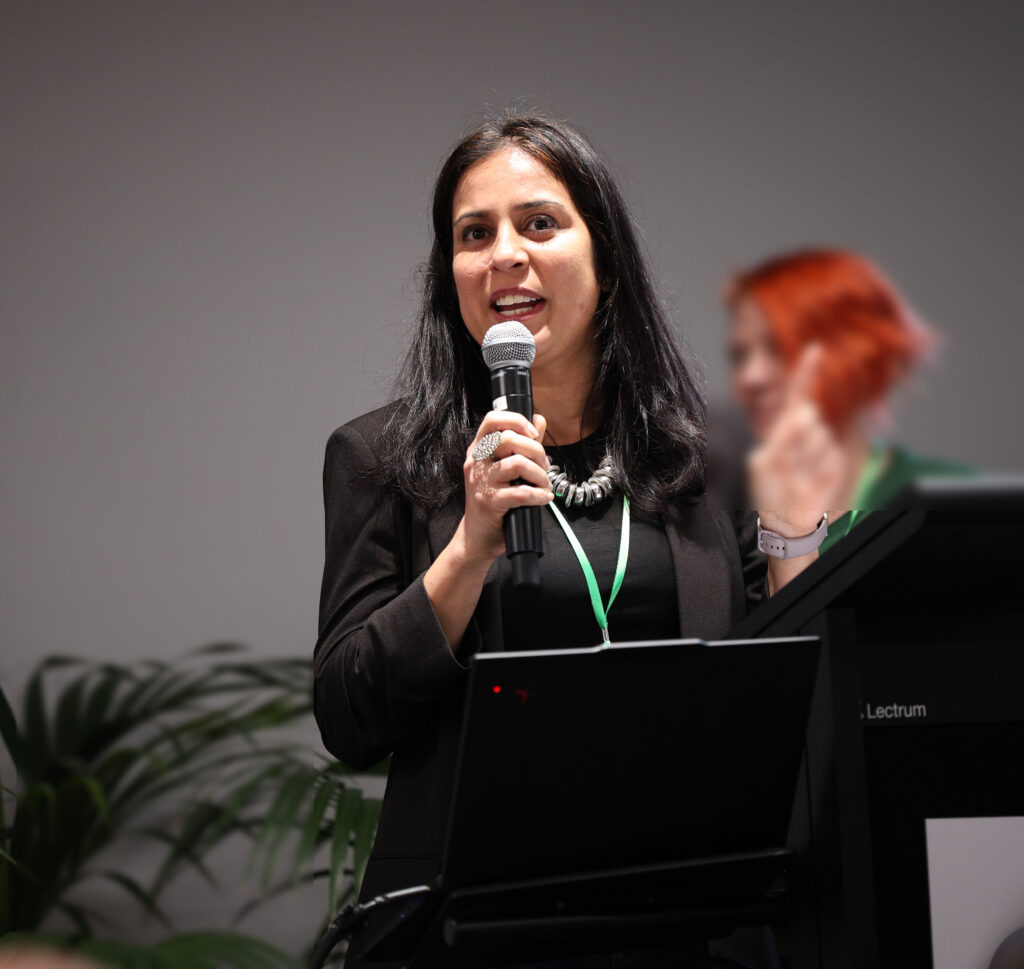
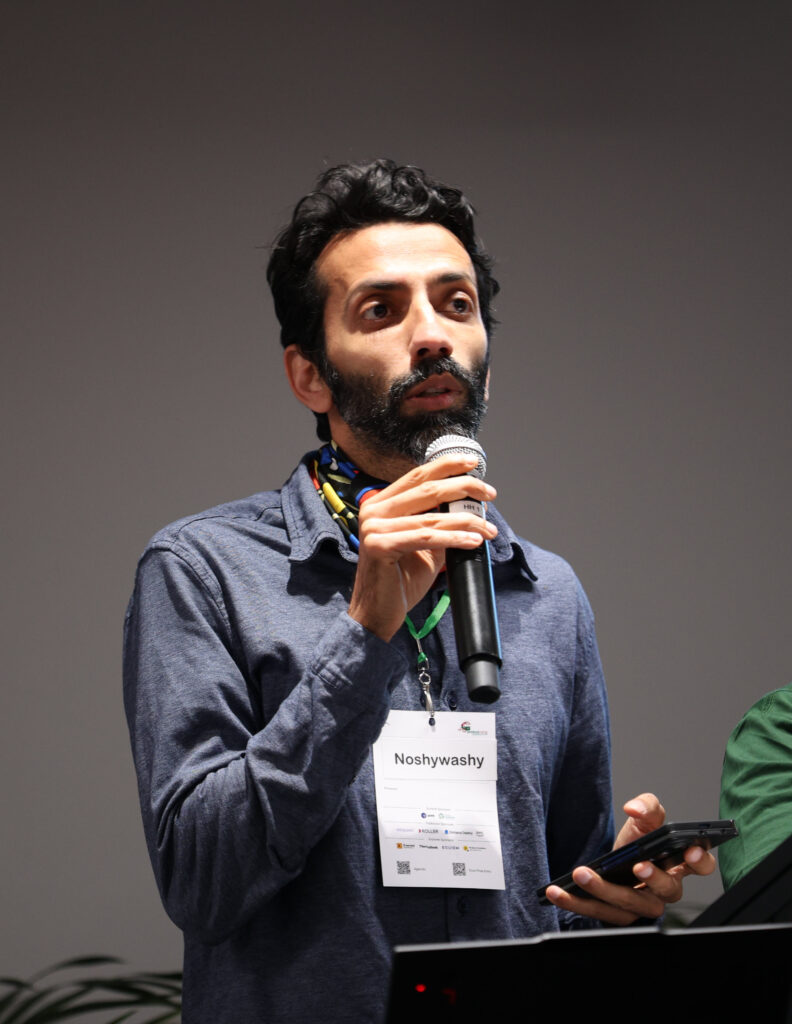
Cultivate your inner stability – Nosh Darbari
How do you protect yourself and yourself mental health in a world filled with stimulation every millisecond of the day which has fried our nervous system? Nosh has posted about his talk.
Product (not eng) architecture: your best friend for strategic product work – Gin Atkins
Summary by Megan McDonald
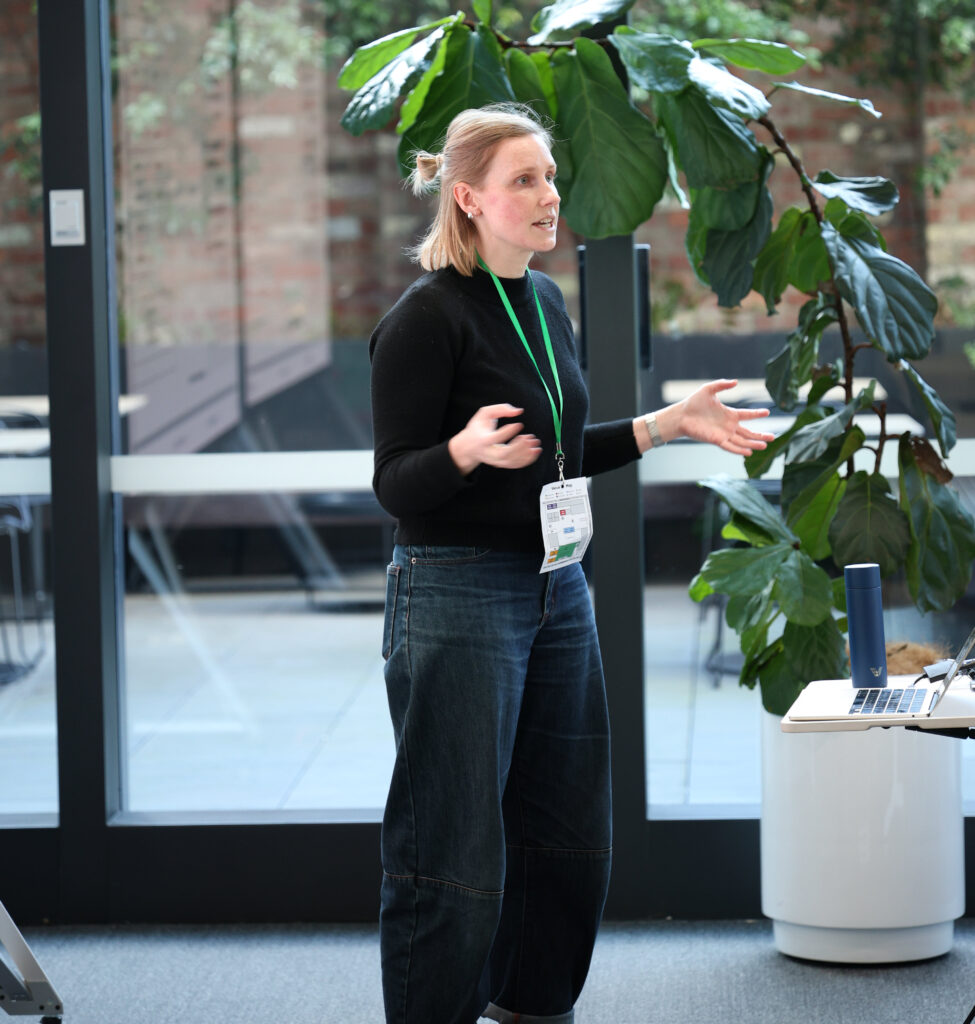
Strategic product work is hard when we can’t represent the product from a strategic product perspective. A product architecture might just solve all that.
We have a gap in our strategic level artefacts. PRDs, delivery roadmaps and strategy decks – all common product documents – rarely show us what the actual product is. This hinders us when doing strategic level, whole of product work.
Enter the product architecture – a conceptual diagram that describes the capabilities of a product from the customer’s perspective, and how they’re organised. It facilitates whole of product conversations, and lets teams and stakeholders partition the strategic concerns from often distracting tactical (feature level), or operational (implementation) ones.
Using the example of a B2B order management platform for restaurants, Gin showed us how an understanding of product architecture can equip product teams to do strategic work at a whole of product level.
Using her own experience over the last decade, Gin demonstrated how product architecture is powerful when decisions need to be made about whether or not to invest in new capabilities, in highlighting how product strategy connects to business strategy, and in negotiating investment trade offs. Importantly, creating a view of product architecture collaboratively creates critical buy-in, and an aligned team with a shared understanding is like rocket fuel for getting things done!
For the full blog, head to https://ginatkins.substack.com/p/product-architecture-your-best-friend and one of the Camp volunteers has written a blog post.
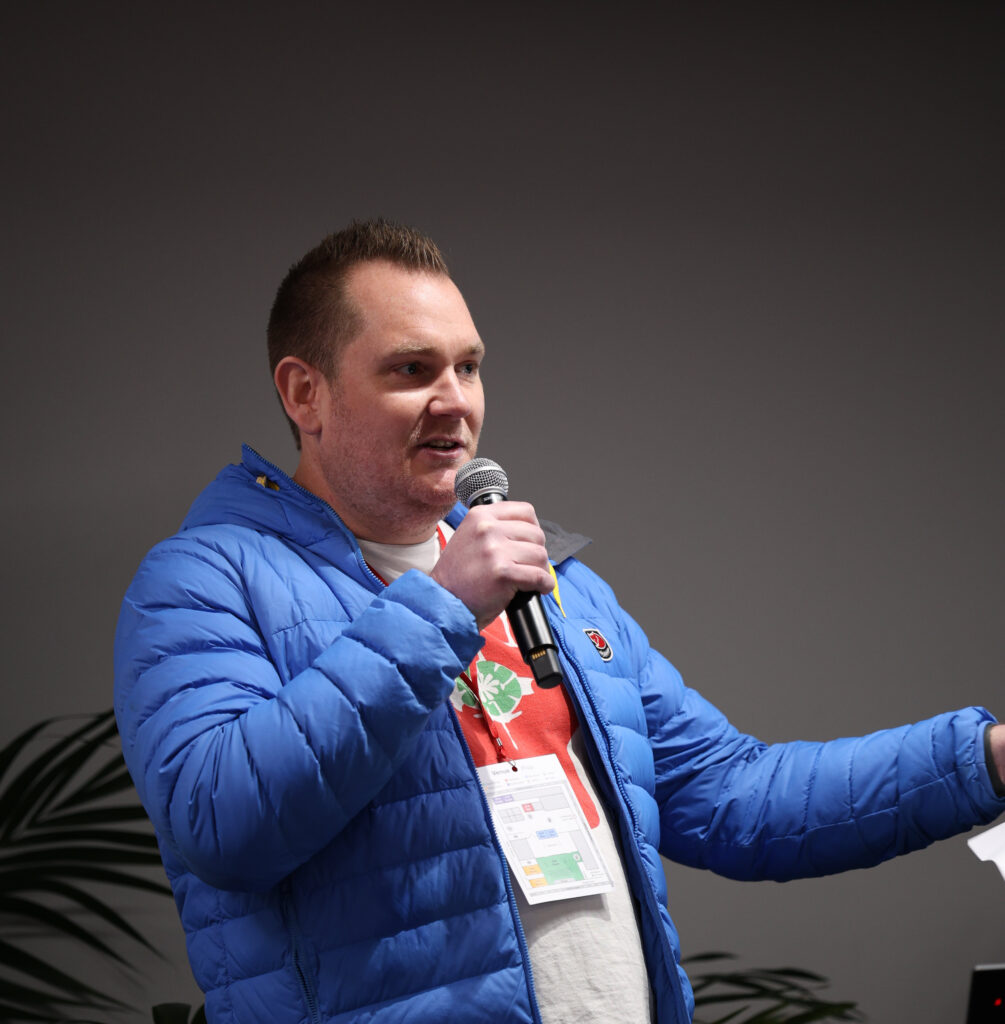
Notion: A nearly complete toolkit for product/project management – Brent Snook
Getting into the nitty gritty of Notion templates & how to use Notion to drive your day to day kanban, story mapping & milestone planning.
Up, Down, and Sideways on the Product Career Ladder – Assaph Mehr & Cam Ross
Assaph’s post & summary below by Megan McDonald
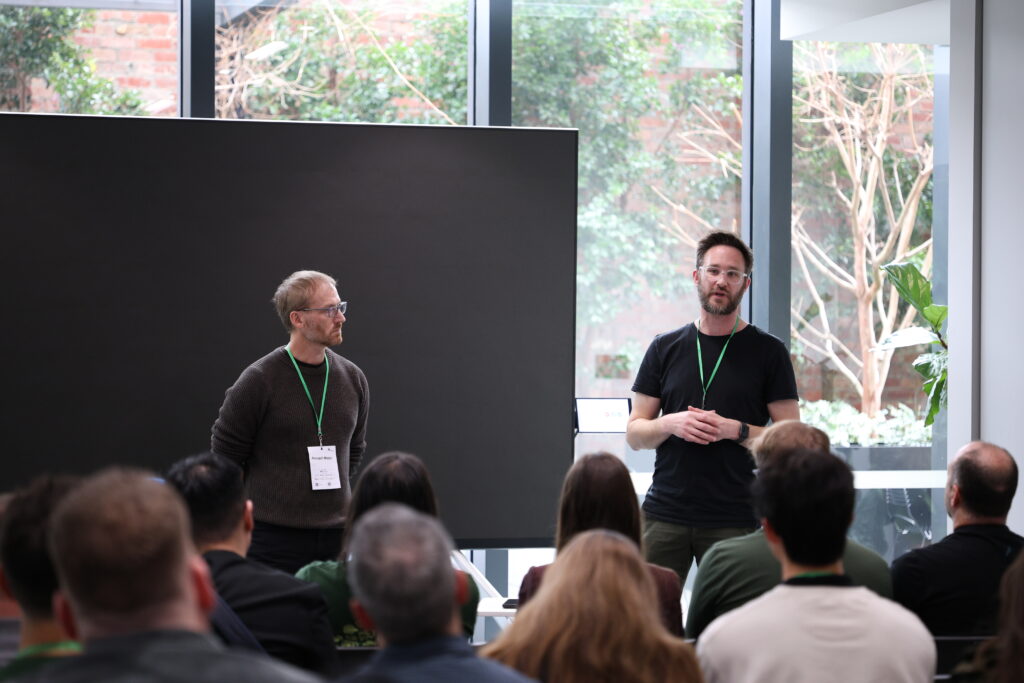
“Who’s insane enough to want to be a CPO?” Assaph & Cam shared their experiences of Head of Product and executive roles, and didn’t hold back! For individual contributors thinking about pursuing leadership, Assaph & Cam encourage you to consider why you want a leadership role and whether this is the right path for you. Product skills are extremely transferrable, and leadership is not the only path to progress.
Here are their key takeaways for aspiring Product leaders:
- To be successful you need to acknowledge that politics is the role, and become adept at navigating egos and finding ways to work with the people you’re surrounded with.
- Find external support – leadership can be lonely and you won’t necessarily have a ‘home team’ of peers to lean on.
- Leadership roles require you to work at a completely different scale, beyond products to portfolios, organisations and markets. Your experience won’t necessarily prepare you for this, and you’ll find yourself involved in much less product work.
- It’s nothing like the books! As a leader you’ll be doing more line management than mentoring.
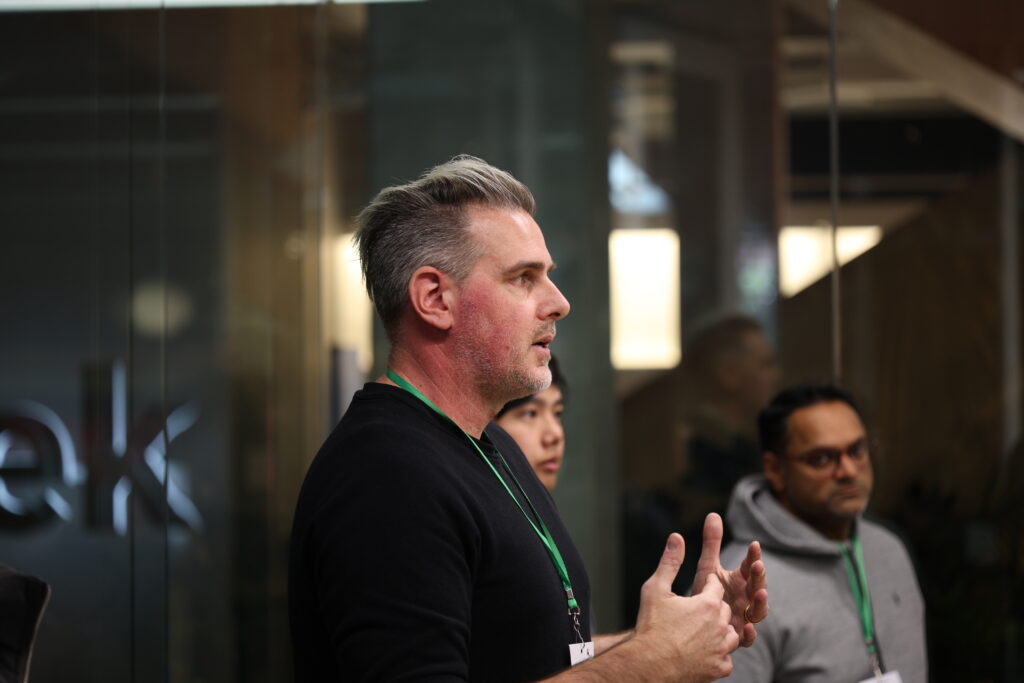
Discovery as a means to prove out strategy…in 12 weeks or less – Evan Ravensdale
During the talk Evan talked about Assumption Models. Blog post here.
Hands on with the vibe coding tools – Simon Rumble
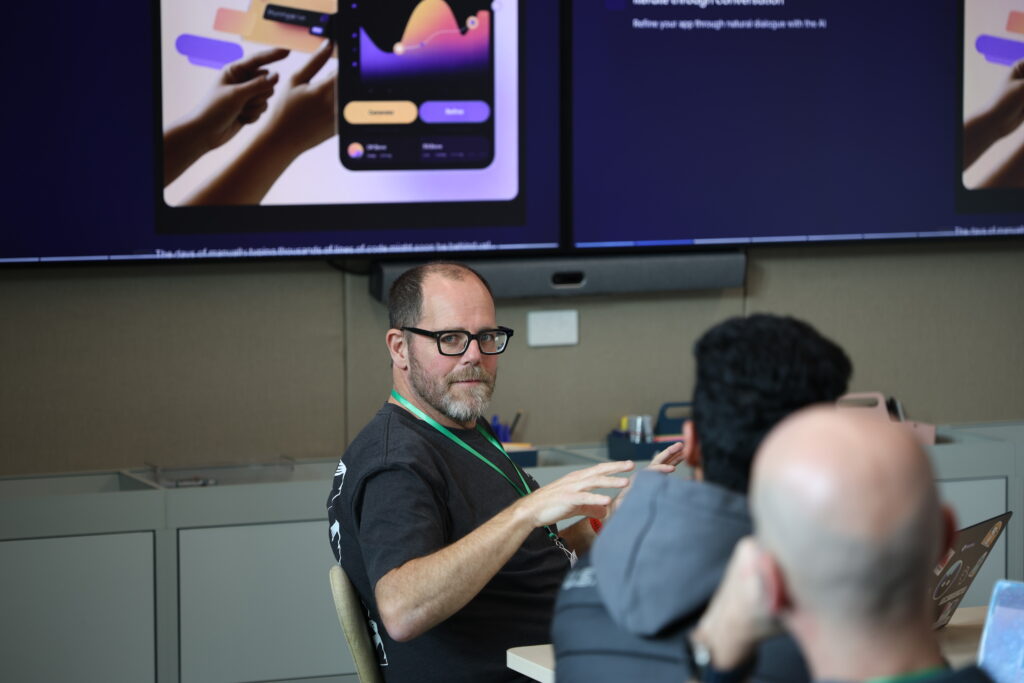
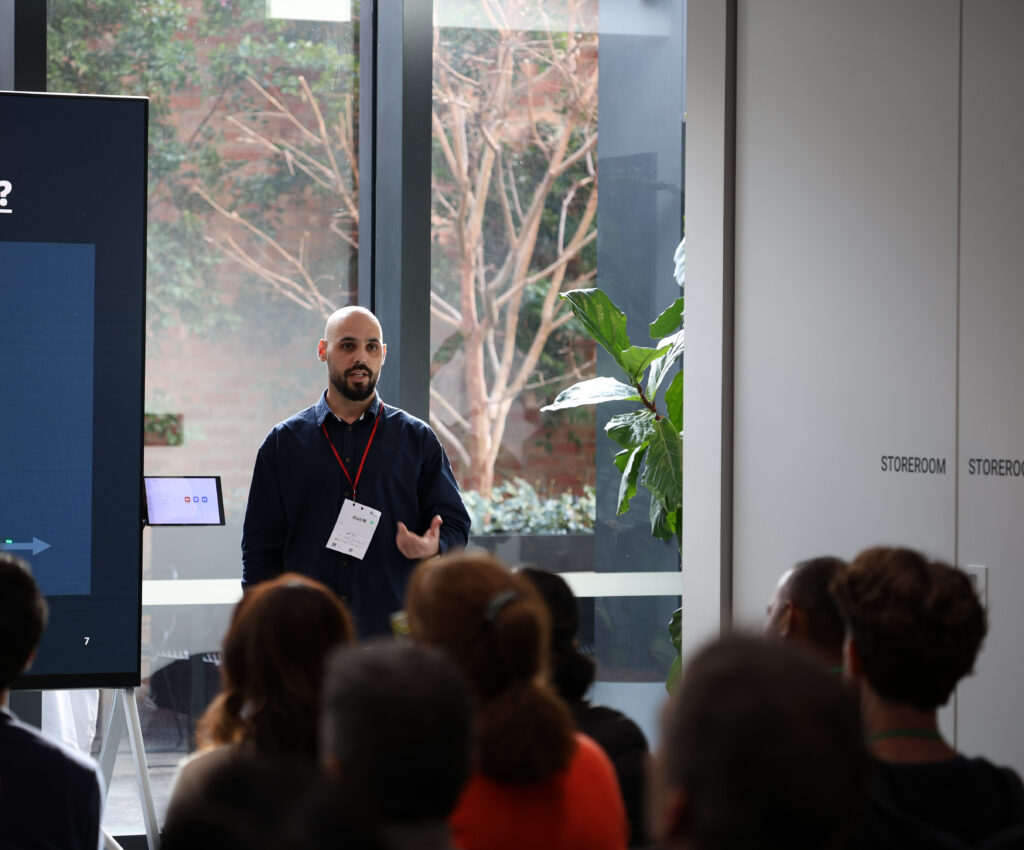
Product Management at Amazon – Rad Macakanja
What is product like at Amazon?
Designing Design Conversations: How to Work Better with Designers – John Ungar
Design reviews, feedback & other conversations.
Summary by Megan McDonald
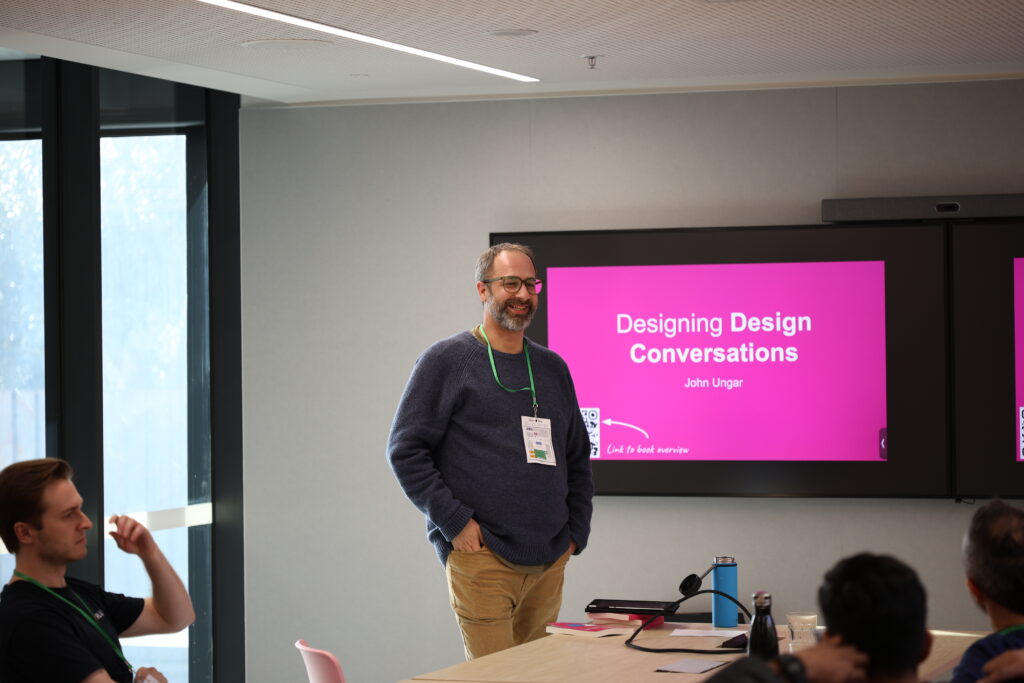
Something is broken in design .. organisations are investing and teams have access to research and AI to power them, but new features are too often falling short and not meeting the real needs of their users. What can be done?
Effective communication about design is critical – good design conversations improve quality and efficiency. Without strong and consistent design conversations, it is easy to lose sight of design purpose.
Design your design conversations.
A visual discussion framework containing agreed design parameters enables better stakeholder conversations about your design by providing structure, focus, and consistency. By purposefully designing your conversations, everyone can align on the most important aspects of the design and its impact, and you will create transparency around trade-offs and clear documentation of decisions.
Well designed conversations lead to change. It’s not rocket science, it’s just structure!
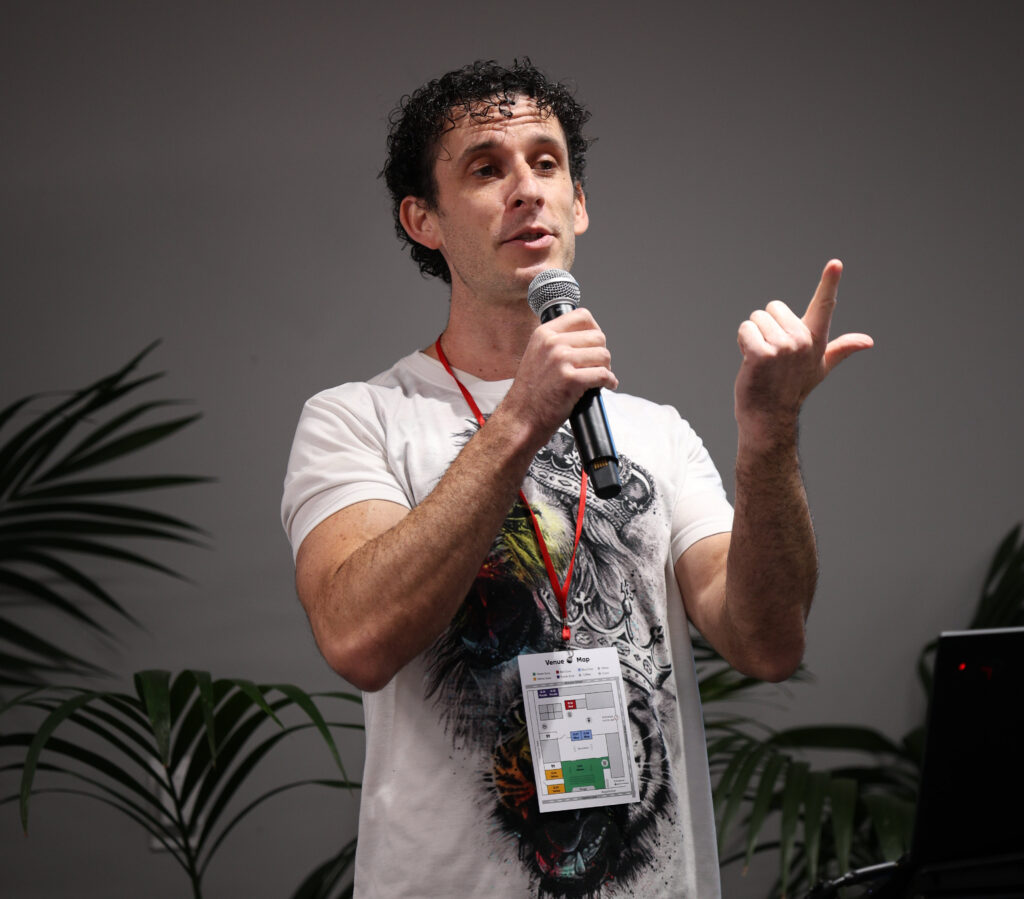
Specs as code – the AI revolution for product managers – Josh Centner
What if LLMs could generate perfect specs that produce perfect code?
Painted Door Test – Liam Fitzgerald
Liam shared how is team approached a painted door test to validate customer interest in a new upsell item.
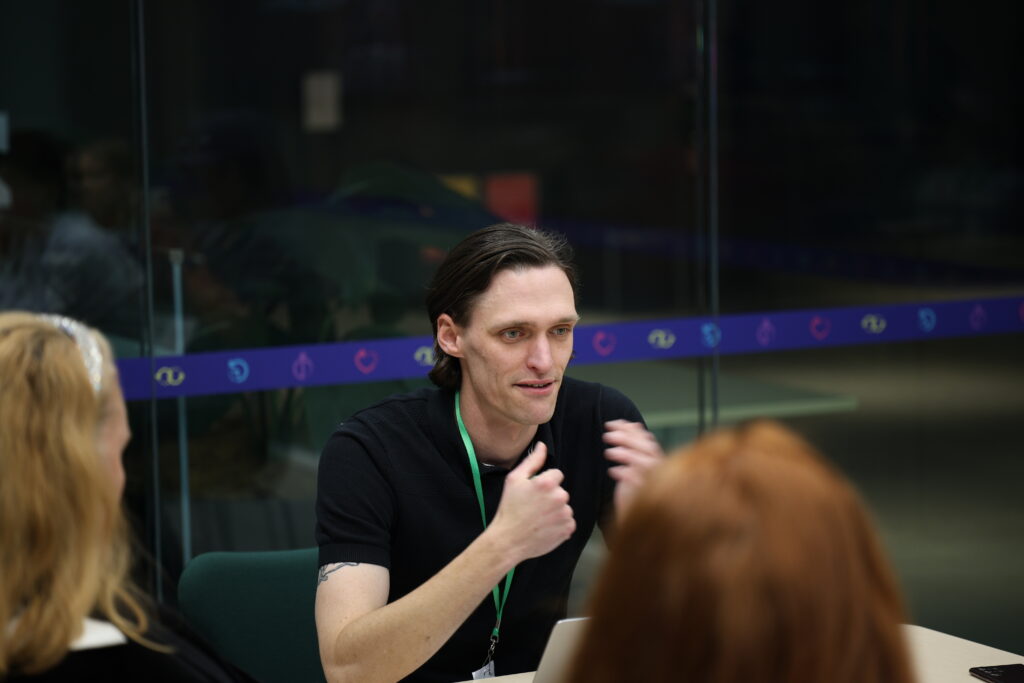
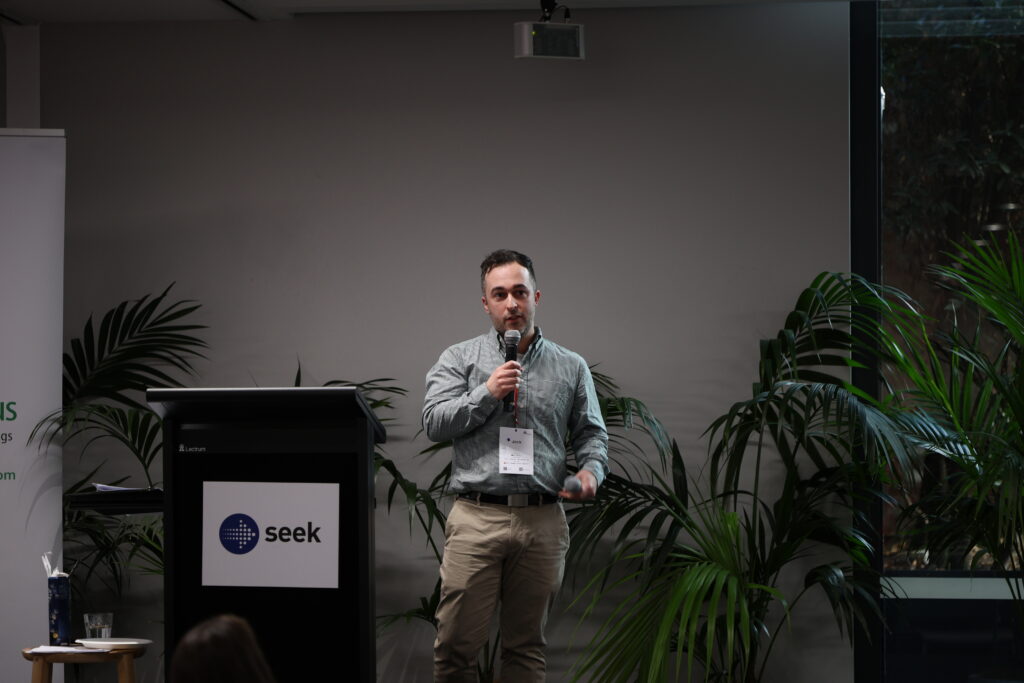
Exploratory Customer Interviews – Jack Rust
An unrehearsed, live customer interview!
Product Management Unfiltered – Melissa Klemke & Liz Blink
Two product veterans to sort thru the questions
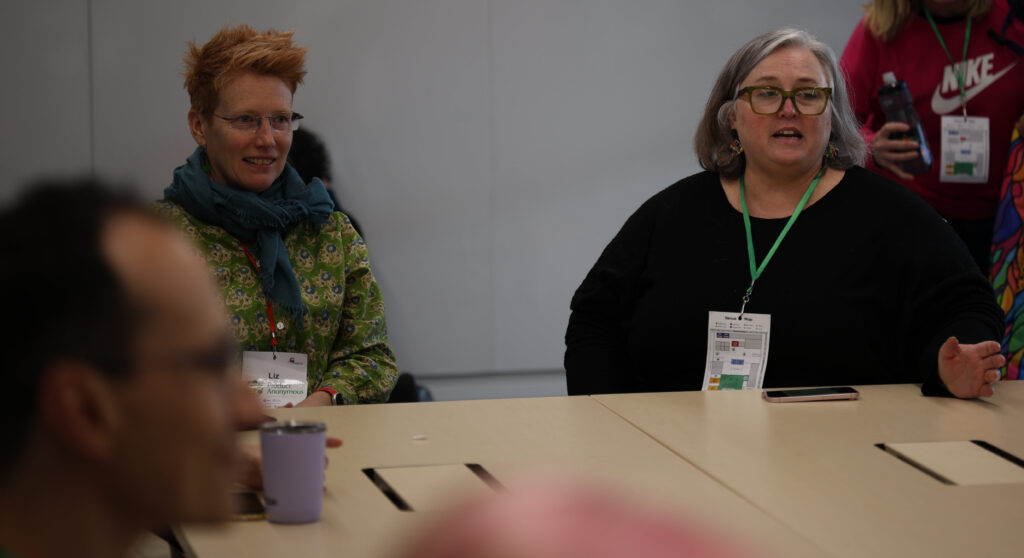
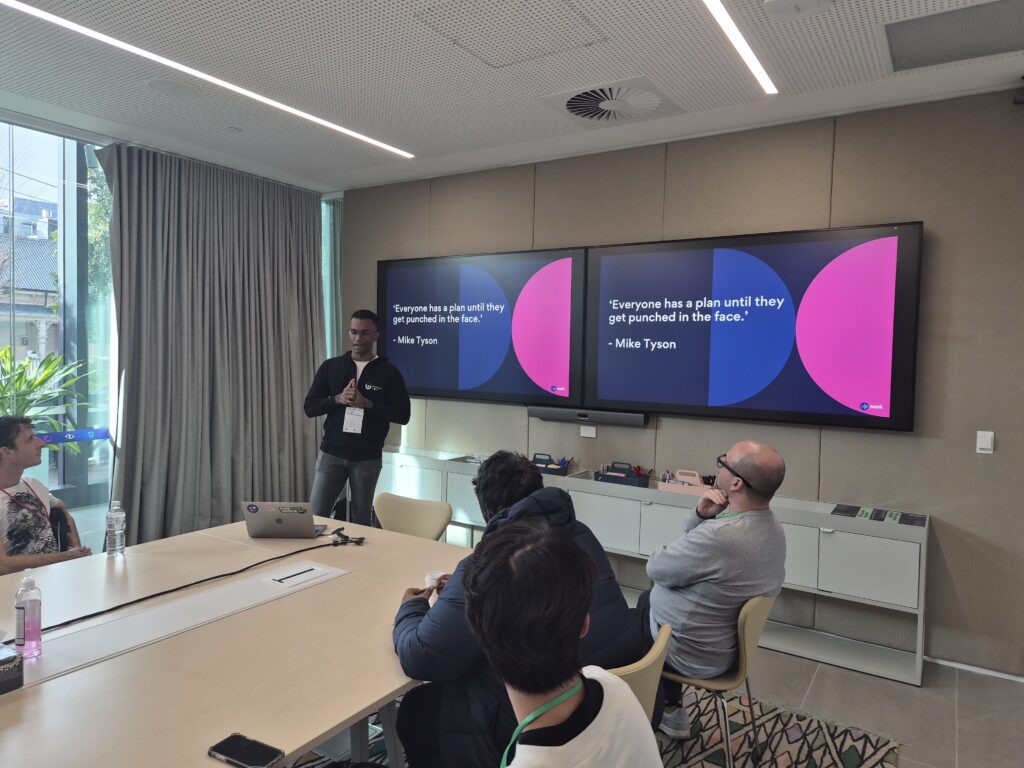
Untangling Growth in an Internal Startup – Daniel Joshuia
One of our international attendees! Daniel was in from KL.
Ai Agents as a Product Team – Zain Franciscus
Summary by Megan McDonald
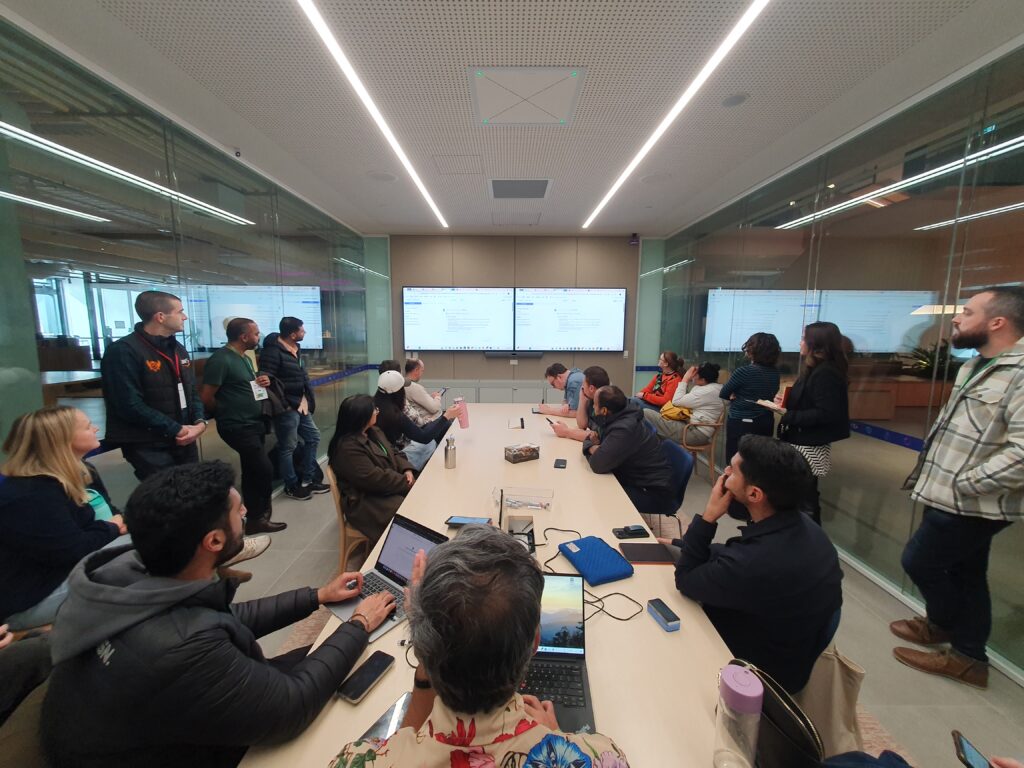
To explore the answer to this controversial question, Zainul shared how he built a team of specialised AI agents using Relevance AI, a no-code platform.
These agents performed tasks such as market research and UX design, and were connected seamlessly to each other in an ‘agentic workflow’. Using the example of a podcast platform, Zain shared his experience of running an experiment to test the agents’ ability to solve a common product problem as a team.
“Here are some key lessons I learned from working with AI agents that anyone can apply:
Don’t wait for the perfect AI: Start experimenting now. The tools are mature enough, and the learning curve is definitely worth it.
Review everything: Treat the output from agents as a first draft. We are still responsible for the final quality. Don’t surrender our critical thinking to the agents.
Use AI to shift your time: Offload some writing and formatting tasks so you can focus on more complex work like understanding customer problems, defining strategy, and aligning the team.”
So, can AI agents replace a product team? Zain says that despite being a valuable tool for research, analysis and productivity, AI lacks the capacity for negotiation, stakeholder management, and understanding the deeper significance of tasks. Using it in the right way, Product Managers can be freed to focus on strategic thinking and human-centred work.
To read the full story and see how the AI team performed, visit https://zainulfranciscus.substack.com/
Games!





After Party!
